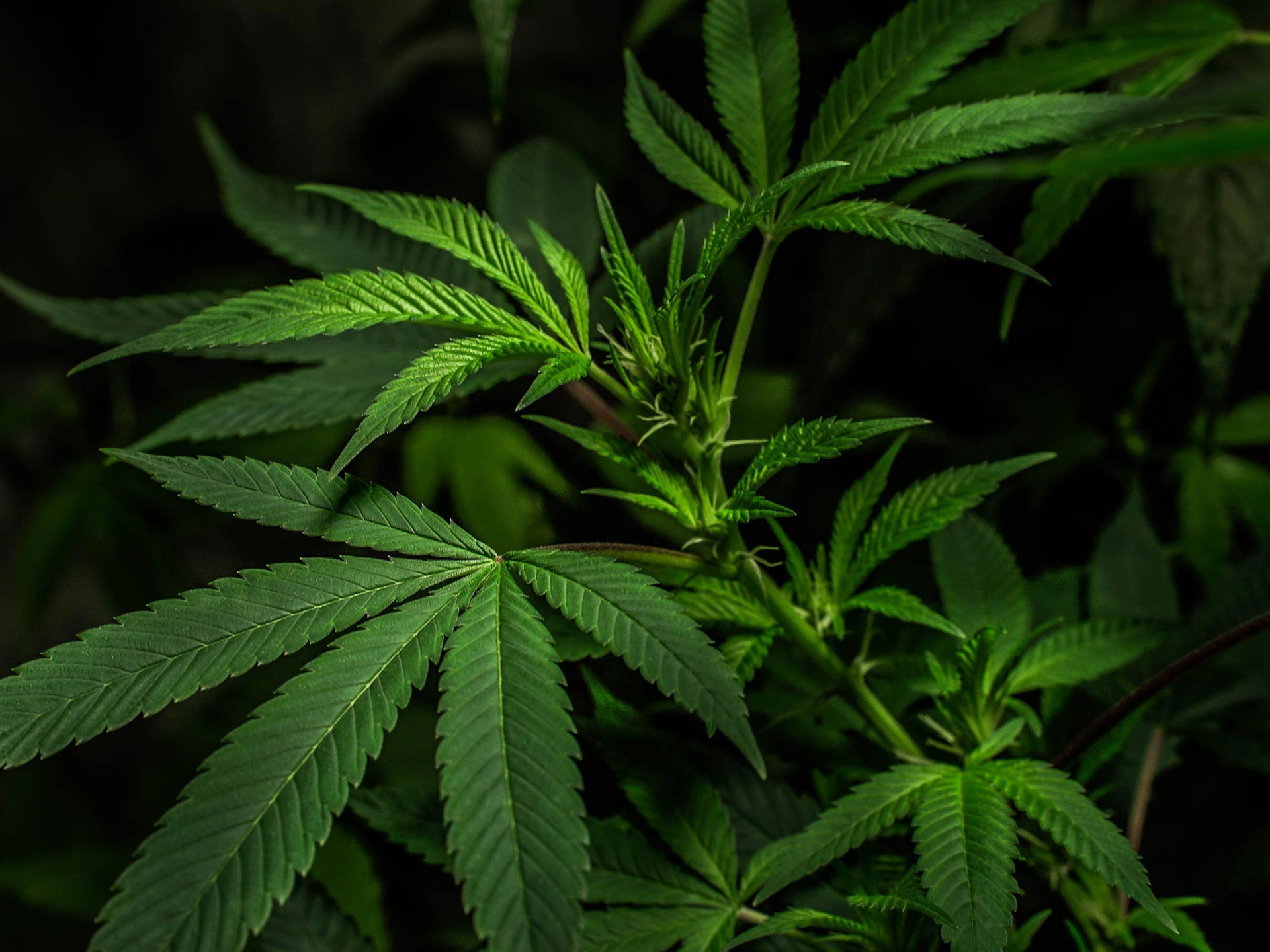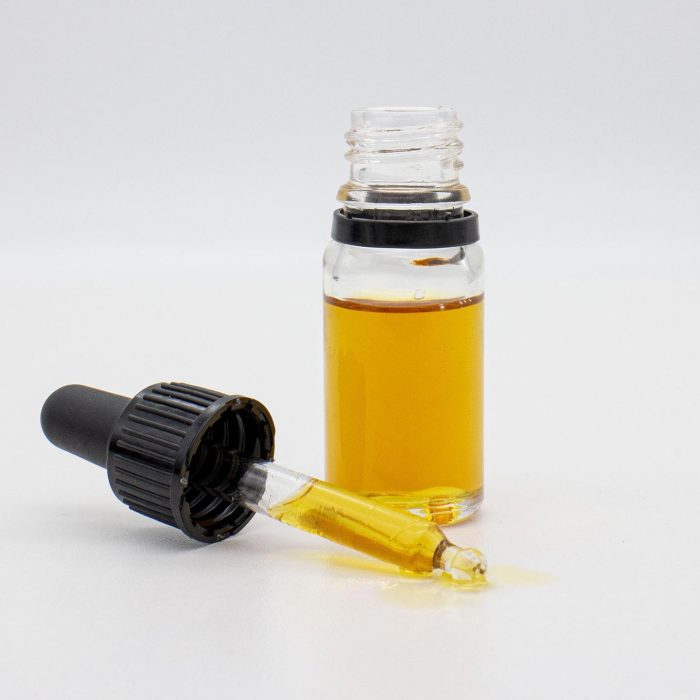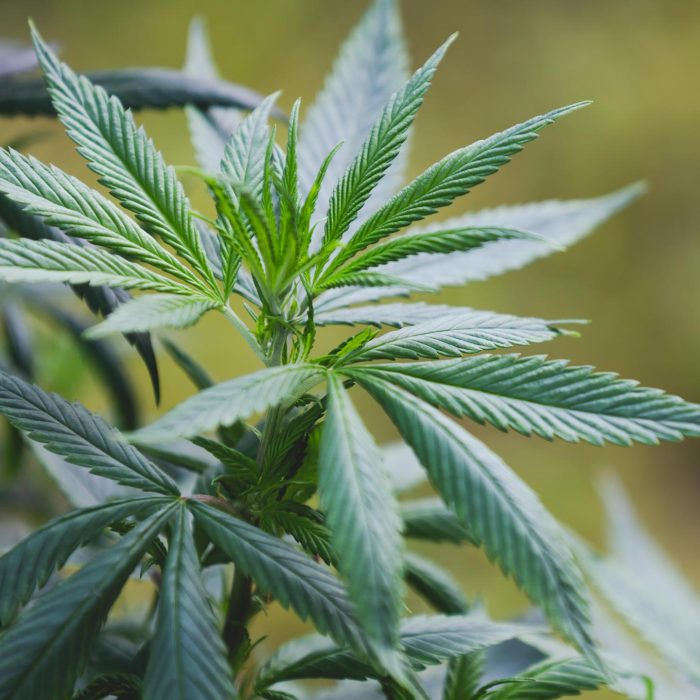Cannabis is a wondrous plant that offers tremendous benefits to the well-being of humans and animals. The naturally occurring compounds that can be found in the cannabis plant are called cannabinoids.

Cannabinoids can be split up into two groups: major and minor cannabinoids. The two most well-known major cannabinoids are called delta-9-tetrahydrocannabinol (THC) and cannabidiol (CBD). The psychoactive effects of cannabis come from THC, meaning that these cannabinoids will produce an intoxicating effect after ingestion. CBD is non-psychoactive and will not get you high but it does interact with receptors in the human body associated with effects on general well-being. These are called cannabinoid receptors, the most important ones are the CB1 and CB2 receptors.
About the Endocannabinoid System (ECS)
In 1988, a major breakthrough in scientific discovery took place when researchers Allyn Howlett and William Devane came to the conclusion that mammals have specific receptors that are responding to cannabinoids. Ever since researchers and scientists have been fascinated by the effects that cannabis can have on the human body. The interconnecting network in our bodies that interacts with cannabinoids is called the Endocannabinoid System.
Endocannabinoids
Every mammal on earth possesses cannabinoids which naturally occur in the body. The most familiar ones being AEA and 2-AG.
Physiological system homeostasis. Regulation of neurobiological functions ranging from pain perception, appetite, memory and reproductive functions. Making sure our cellular functions are working harmoniously. Our bodies produce endocannabinoids that bind to our ECS receptors.
Basically, the ECS receptors can be seen as the lock and cannabinoids are the key. This lock and key principle explains why cannabis has such a profound effect on the human body.
Cannabinoid receptors (CB1 & CB2)
CB1 receptors are found in our central nervous system and both CB1 and CB2 receptors in certain peripheral tissues.
The amount of scientific discoveries made by researchers is accelerating at a rapid pace. So far, over 100 different minor cannabinoids have been discovered and identified. Each cannabinoid has its own attributes and functionalities.
Compounds of the cannabis plant
Let’s break down the three most important compounds that make up the distinctive characteristics of cannabis, each with their own function:
- Flavonoids & phytonutrients give color to the leaves and stem
- Terpenes give the plant its unmistakable aroma and fragrance
- Cannabinoids are the active chemicals that the receptors in our bodies respond to
Most cannabinoids are directly interacting with the endocannabinoid system (or ECS), a widespread neuromodulatory system that helps to keep the human body in homeostasis. This is why ingesting CBD and other cannabinoids help to preserve our natural balance.
Cannabinoids can also be split up into three groups:
- Phytocannabinoids – naturally occurring cannabinoids found in plant material
- Endocannabinoids – endogenously produced
- Synthetic cannabinoids – artificially produced
Major & minor cannabinoids
It wasn’t until 1942 when American chemist Roger Adams successfully isolated the first cannabinoid, Cannabidiol (CBD).
Most research on cannabis has focussed on just the two major cannabinoids Tetrahydrocannabinol (THC) and Cannabidiol (CBD). There has been a surge of enthusiasm and interest in the lesser-known minor cannabinoids such as Cannabidiol (CBN), Cannabigerol (CBG), Cannabichromene (CBC) and Tetrahydrocannabivarin (THC-V).
Effects and characteristics of minor cannabinoids
Cannabinol (CBN):
- Makes you sleepy
- Sedative effects
- May help with insomnia, sleeping problems
- Stimulates appetite
- Has antibacterial properties
- Respiratory issues related to allergies and asthma
- Auto-immune conditions like Crohn’s disease
Cannabichromene (CBC):
- Third most prominent cannabinoid
- Potent anti-inflammatory
- Antidepressant properties
- Binds to receptors linked to pain reception
- May be much more potent for treating stress and anxiety
- Significant anti-inflammatory
- Pain reduction
- Antiviral
- Anti-tumor
- Bone-growth stimulating
Cannabigerol (CBG):
- Non-intoxicating
- May exert psychoactive effects
- Boost anandamide (bliss chemical)
- Mellower alternative to THC
Cannabidivarin (CBD-V):
- Found mainly in indica strains
- May reduce seizure frequency and severity
- Treating nausea and inflammation
Tetrahydrocannabivarin (THC-V):
- Appears to positive effect insulin resistance
- Preventing or treating diabetes
- Anti-inflammatory properties in animal studies
The Entourage Effect
There’s an interesting theory that claims all the different cannabinoids and terpenes in the cannabis plant are potentially synergising and interacting with each other. This suggests that ingesting a full spectrum CBD product will have a profoundly different effect on the human body than for example CBD isolate or broad spectrum oils.
These synergistic effects were further expanded by neurologist and psychopharmacology researcher Dr Ethan Russo in his seminal paper ‘Taming THC: potential cannabis synergy and phytocannabinoid-terpenoid entourage effects’. He examines the mysterious world of the cannabis plant, outlining the under-explored potential of the plant’s terpenes, which according to Russo “display unique therapeutic effects that may contribute meaningfully to the entourage effects of cannabis-based medicinal extracts”.
According to this theory full spectrum oils will be the most beneficial because they contain a much higher variety of cannabinoids when compared to broad spectrum or isolate. Keep in mind that this theory still needs more research to be perceived as a proven scientific claim.
The future of cannabinoids
In order for CBD to reach its full potential and change the lives of as many people as possible, there’s still more work that needs to be done. While there may be some challenges ahead, the strength of the CBD community has shown that nothing is going to stand in its way.
At CBD Oil Europe, we are always excited about new scientific discoveries in regards to cannabis and love sharing our knowledge of the cannabis industry with you. Refer to our extended knowledge base for more articles on CBD. Feel free to get in touch with us if you have any questions or enquiries you would like to discuss.



